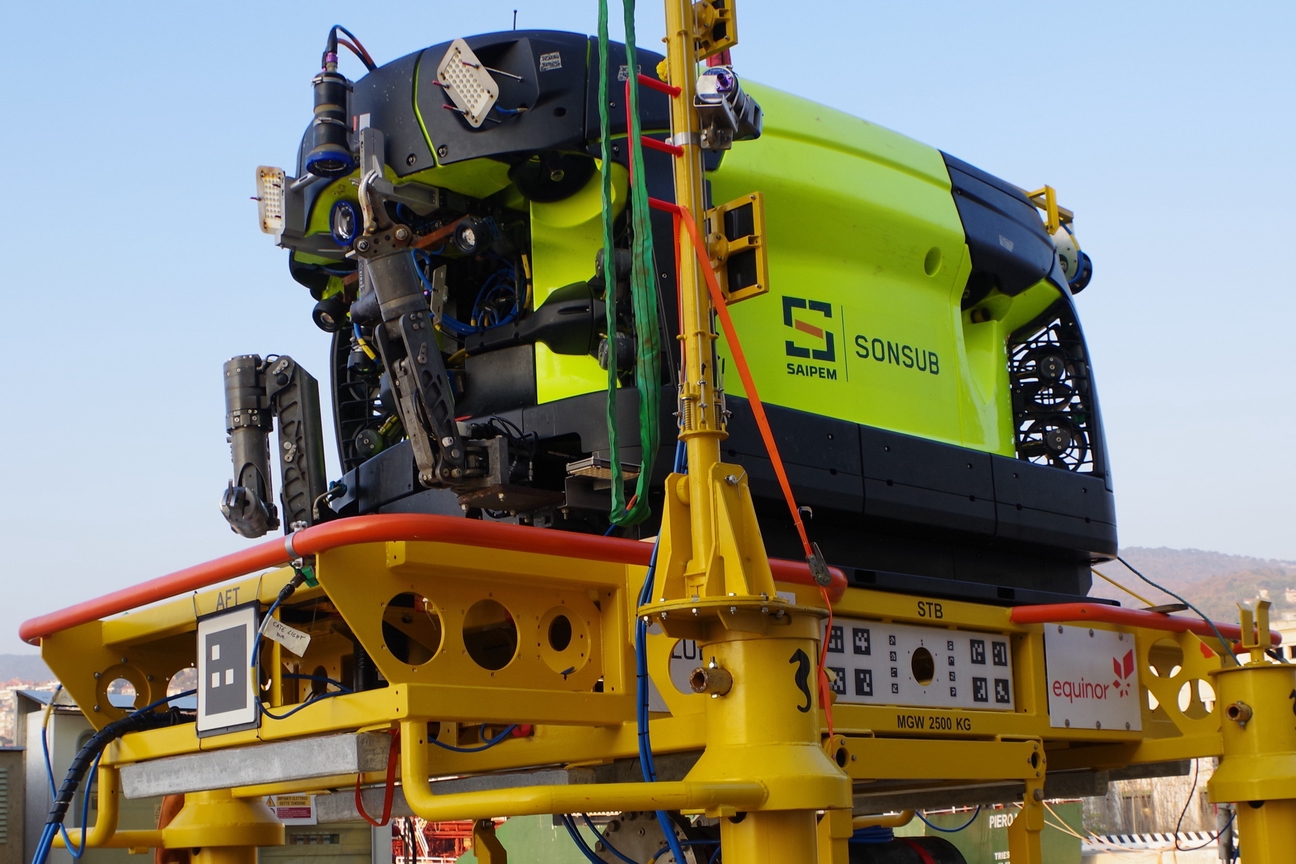
Hydrone drones deployment on Njord-A
More than a year has passed since Saipem Ltd. Norwegian Branch was awarded the first worldwide contract for commercial deployment of a resident Underwater Intervention Drone (UID) on Njord-A platform by Equinor ASA, marking an important milestone in the industry and consolidating Saipem’s vision on Life of Field and Asset Integrity Management Services. The service contract has a duration of 10 years and the possibility of being extended by five two-years optional periods. The scope of work encompasses the provision of a full electric WROV, an Underwater Intervention Drone (UID), associated intervention tooling and asset integrity sensors, and operational personnel to be deployed both offshore and onshore in a control room located in Norway, with a short-term target of increasing vehicles remote control and de-manning offshore operations, in full compliance with Equinor’s emission and carbon footprint reduction targets.
Present status
During 2020, the project team, which is spread across Italy, Brazil, UK and Norway, managed to swiftly adapt to the new challenging scenario imposed by the COVID-19 by embracing new work methodologies, and accelerating the adoption of digital tools. Over the last few months Saipem has performed the upgrade for remote navigation and manipulation of an interim WROV and its mobilization onboard Njord-A rig with full integration on the Company provided Launch and Recovery System. The interim WROV will be replaced by Saipem Hydrone-W full electric WROV in 2022, whose design is undergoing in Solutions Sonsub office in Marghera, Venice, Saipem’s pole of competence for subsea robotics.
The qualification process involved more than 4700 total dive hours with over 70 dives, with the longest dive being 2000 hours.
At the same time, in agreement with Equinor it was decided to keep Hydrone-R, the Saipem hybrid ROV/AUV resident system capable of performing both intervention and inspection missions, at Saipem Trieste Base in Italy, for further testing and technology maturing.
The test facilities in Saipem Trieste Base have allowed to perform in-water tests in a safe and controllable environment. A “playground” composed of pipelines sections complete with crossings and free-spans, valves intervention panels and Subsea Production Systems mock-ups such as PLET and Xmas Tree, has allowed to perform Hydrone-R tests in a realistic environment.
Hydrone-R is being qualified as per DNVGL-RP-A203 TRL5. The qualification process involved more than 4700 total dive hours with over 70 dives, with the longest dive being 2000 hours. In addition to more than 40 complete subsea battery recharging cycles, more than 100 docking station parking cycles, both in wired mode and in wireless (optical) mode, hundreds of autonomous missions and emergency procedures. During these trials all the main functionalities were tested with success. In detail the process involved testing on full ROV functionalities (tethered / untethered), remote control, manipulation, through-water optical communication, data acquisition and processing (e.g. 3D reconstruction and photomosaic). Tests on acoustic positioning and communication, obstacle avoidance, autonomous navigation, pipeline tracking and endurance tests were also conducted.

Hydrone-R UID tests at Saipem Trieste Base
Looking ahead
Over the next few months, the team will be busy in carrying out periodic maintenance on Hydrone-R after the system has spent 12 months in the Trieste playground. Additionally, a few project specific upgrades will be implemented to make Hydrone-R fully compliant to Equinor UID requirements, such as a bespoke under-slung tooling skid that will allow Hydrone-R to deploy a range of subsea tooling and sensors. Finally, the system will undergo a further in water testing campaign prior to shipment to Norway and final integration with Equinor provided Subsea Docking Station at the Njord-A field. For what concerns the WROV, the development of Hydrone-W will carry on over 2021, while the interim WROV will be fully tested at project depth during Njord-A rig sea-trials in spring 2021 and then remain idle onboard until the start of drilling operations. Lastly, Saipem will capitalize on the time available prior to operations start-up focusing on further selection and training of operational personnel, including bespoke simulator training on Njord-A field operations that will be performed in the new Solutions Underwater Training Center in Trieste, Italy.
Stay tuned!